
How to Use TGS822 Gas Sensor: Examples, Pinouts, and Specs
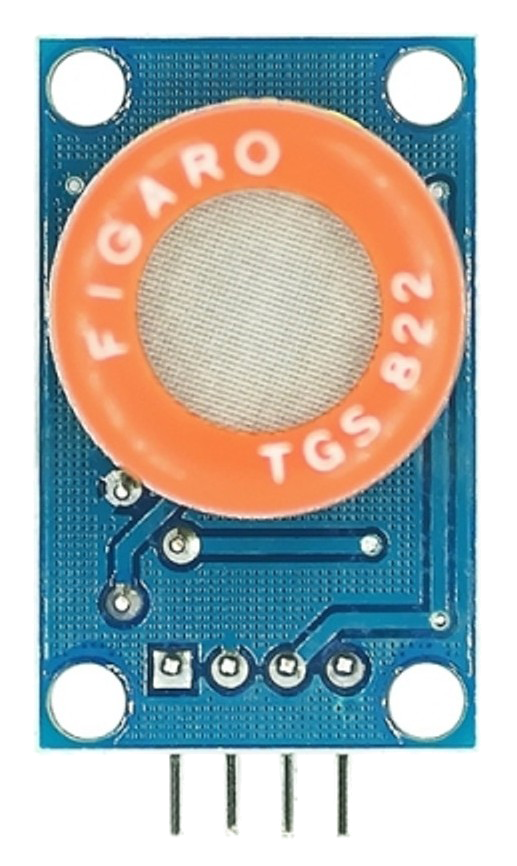
 Design with TGS822 Gas Sensor in Cirkit Designer
Design with TGS822 Gas Sensor in Cirkit DesignerIntroduction
The TGS822 is a gas sensor designed to detect various combustible gases, including methane, propane, and other hydrocarbons. It operates on the principle of resistive change, where the sensor's resistance varies in the presence of target gases. This makes it an ideal choice for applications such as gas leak detection, air quality monitoring, and industrial safety systems. Its compact design and high sensitivity make it suitable for both consumer and industrial use.
Explore Projects Built with TGS822 Gas Sensor
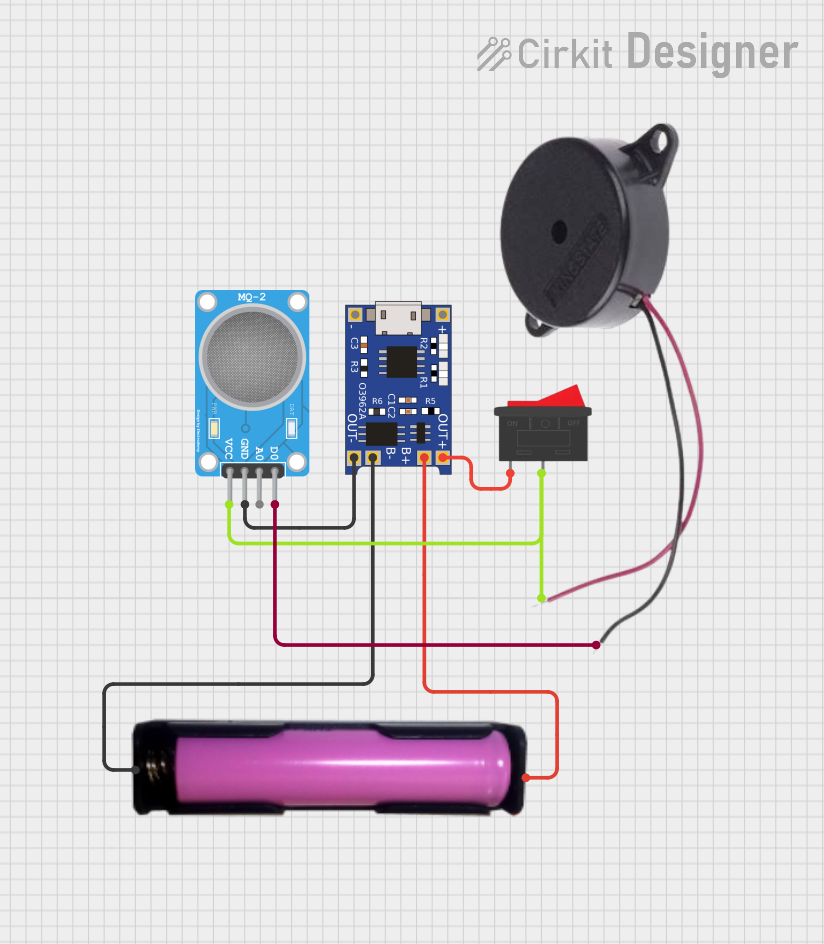
 Open Project in Cirkit Designer
Open Project in Cirkit Designer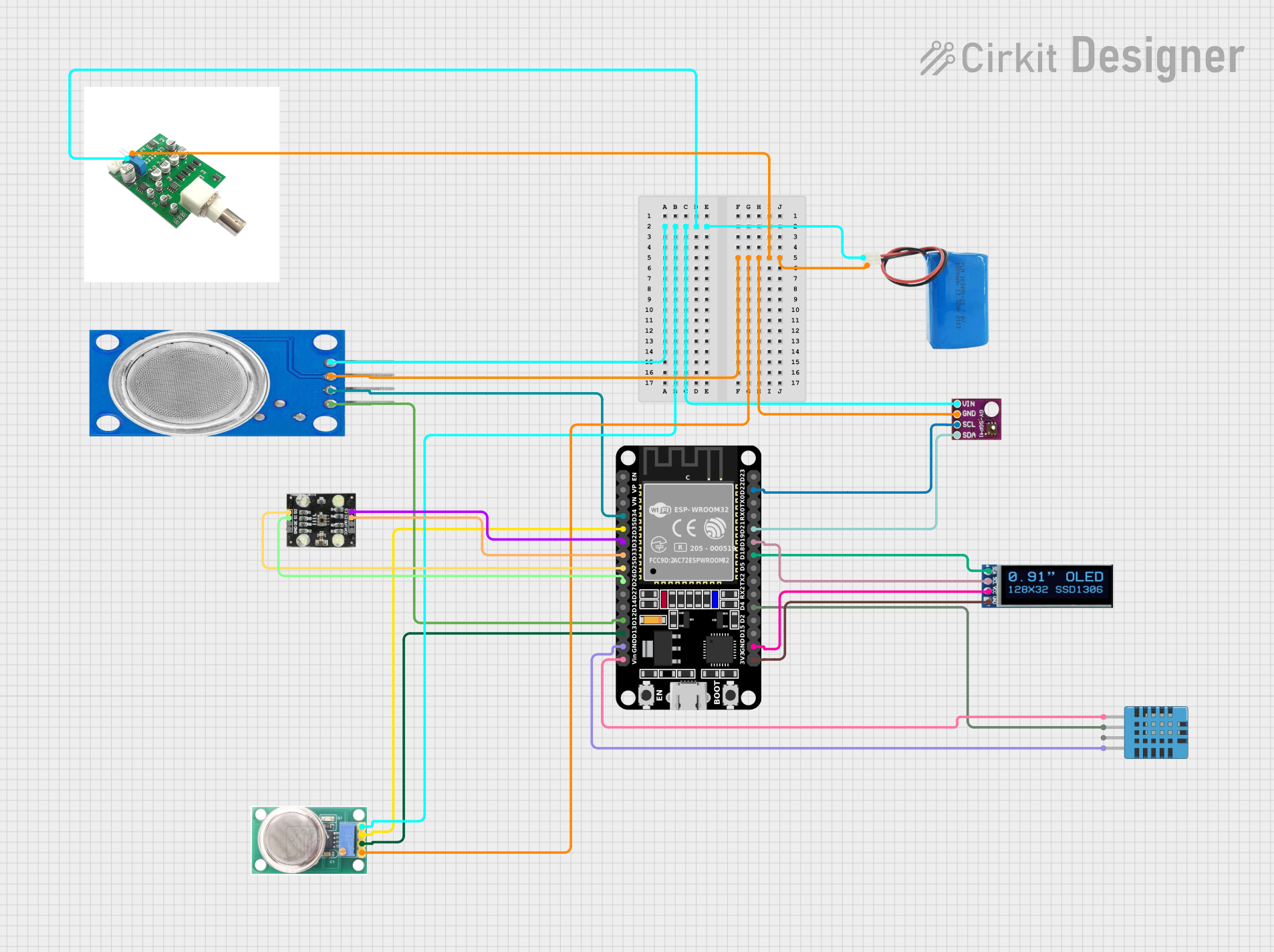
 Open Project in Cirkit Designer
Open Project in Cirkit Designer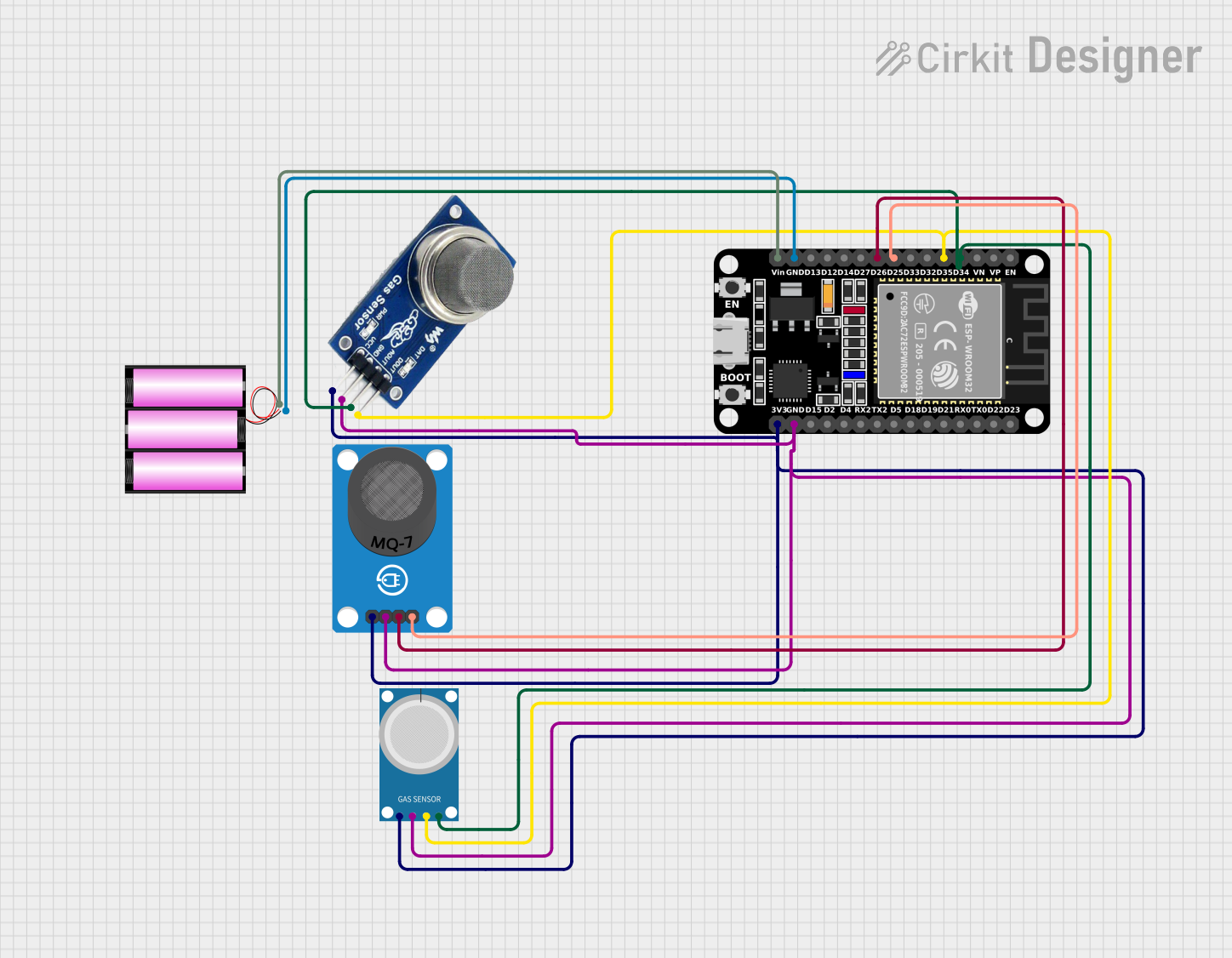
 Open Project in Cirkit Designer
Open Project in Cirkit Designer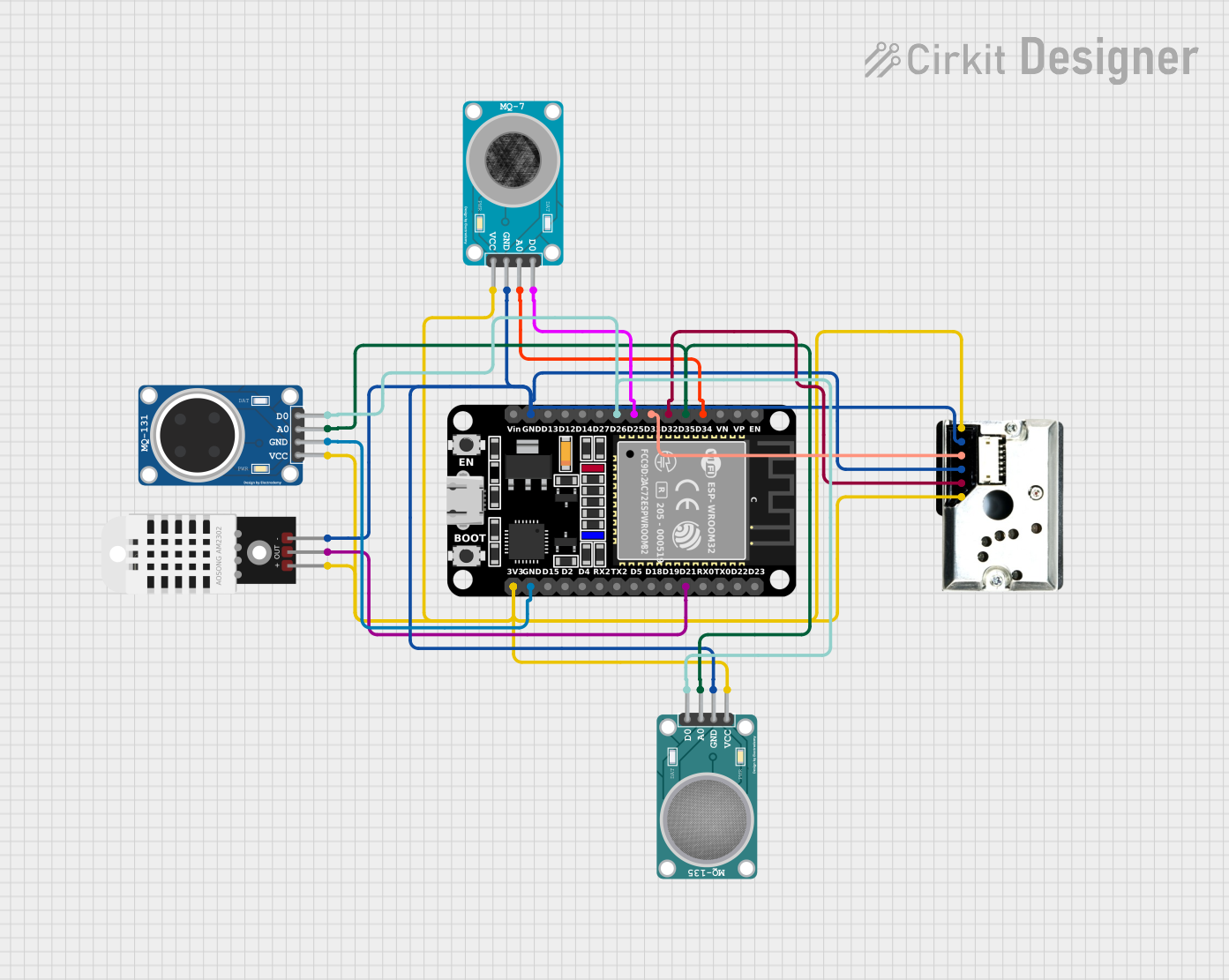
 Open Project in Cirkit Designer
Open Project in Cirkit DesignerExplore Projects Built with TGS822 Gas Sensor

 Open Project in Cirkit Designer
Open Project in Cirkit Designer
 Open Project in Cirkit Designer
Open Project in Cirkit Designer
 Open Project in Cirkit Designer
Open Project in Cirkit Designer
 Open Project in Cirkit Designer
Open Project in Cirkit DesignerCommon Applications:
- Gas leak detection in residential and industrial environments
- Air quality monitoring systems
- Combustible gas detection in HVAC systems
- Safety systems in kitchens and laboratories
Technical Specifications
Key Technical Details:
| Parameter | Value |
|---|---|
| Target Gases | Methane, Propane, Combustible Gases |
| Operating Voltage | 5V DC |
| Heater Voltage (VH) | 5V DC |
| Heater Resistance (RH) | 33Ω ± 5Ω |
| Heater Power Consumption | ~350mW |
| Sensing Resistance (RS) | 10kΩ to 100kΩ (in clean air) |
| Operating Temperature | -10°C to 50°C |
| Humidity Range | 30% to 95% RH (non-condensing) |
| Response Time | ≤ 30 seconds |
| Dimensions | 16mm diameter, 17mm height |
Pin Configuration and Descriptions:
The TGS822 gas sensor has six pins, as described in the table below:
| Pin Number | Label | Description |
|---|---|---|
| 1 | H1 | Heater pin 1 (connect to 5V DC) |
| 2 | A | Sensing element pin (connect to load resistor) |
| 3 | B | Sensing element pin (connect to load resistor) |
| 4 | H2 | Heater pin 2 (connect to ground) |
| 5, 6 | NC | Not connected (leave unconnected) |
Usage Instructions
How to Use the TGS822 in a Circuit:
- Power the Heater: Connect pin H1 to a 5V DC power supply and pin H2 to ground. This powers the internal heater, which is necessary for the sensor to operate.
- Connect the Sensing Element:
- Connect a load resistor (typically 10kΩ) between pin A and ground.
- Connect pin B to the positive terminal of the power supply (5V DC).
- The voltage across the load resistor will vary depending on the concentration of the target gas.
- Read the Output: Measure the voltage across the load resistor using an analog input pin of a microcontroller or an ADC (Analog-to-Digital Converter). This voltage corresponds to the gas concentration.
Important Considerations:
- Preheating: Allow the sensor to preheat for at least 24 hours before taking accurate measurements. This stabilizes the sensor's internal resistance.
- Calibration: Calibrate the sensor in a clean air environment to determine the baseline resistance (RS in clean air).
- Ventilation: Ensure proper ventilation around the sensor to avoid saturation and ensure accurate readings.
- Load Resistor Selection: The value of the load resistor affects the sensitivity and output range. A 10kΩ resistor is commonly used, but this can be adjusted based on the application.
Example Code for Arduino UNO:
// TGS822 Gas Sensor Example Code for Arduino UNO
// This code reads the analog voltage from the sensor and prints it to the Serial Monitor.
const int sensorPin = A0; // Analog pin connected to the sensor's output
const int heaterPin = 9; // Digital pin to control the heater (optional)
void setup() {
Serial.begin(9600); // Initialize serial communication at 9600 baud
pinMode(heaterPin, OUTPUT); // Set heater pin as output
digitalWrite(heaterPin, HIGH); // Turn on the heater
}
void loop() {
int sensorValue = analogRead(sensorPin); // Read the analog value from the sensor
float voltage = sensorValue * (5.0 / 1023.0); // Convert to voltage (5V reference)
// Print the sensor value and voltage to the Serial Monitor
Serial.print("Sensor Value: ");
Serial.print(sensorValue);
Serial.print(" | Voltage: ");
Serial.print(voltage);
Serial.println(" V");
delay(1000); // Wait for 1 second before the next reading
}
Notes:
- The heater can be powered directly from the 5V pin of the Arduino if the current draw is within limits.
- Ensure the sensor is placed in a well-ventilated area for accurate readings.
Troubleshooting and FAQs
Common Issues and Solutions:
No Output or Constant Readings:
- Cause: The heater is not powered or improperly connected.
- Solution: Verify the connections to pins H1 and H2. Ensure the heater is receiving 5V DC.
Inconsistent Readings:
- Cause: Insufficient preheating time or unstable power supply.
- Solution: Allow the sensor to preheat for at least 24 hours. Use a stable 5V DC power source.
High Baseline Resistance:
- Cause: Contaminants on the sensor or improper calibration.
- Solution: Clean the sensor environment and recalibrate in clean air.
Sensor Saturation:
- Cause: Exposure to high concentrations of gas for extended periods.
- Solution: Remove the sensor from the high-gas environment and allow it to recover in clean air.
FAQs:
Q: Can the TGS822 detect gases other than methane and propane?
A: Yes, the TGS822 can detect a range of combustible gases, but its sensitivity varies depending on the gas type.Q: How long does the sensor last?
A: The typical lifespan of the TGS822 is around 5 years under normal operating conditions.Q: Can I use the TGS822 with a 3.3V system?
A: The heater requires 5V DC, but the sensing element output can be interfaced with a 3.3V ADC using a voltage divider.Q: Is the sensor waterproof?
A: No, the TGS822 is not waterproof and should be protected from moisture and condensation.
By following the guidelines and best practices outlined in this documentation, you can effectively integrate the TGS822 gas sensor into your projects for reliable gas detection.